Art Forms of Maharashtra make western India proud, as this state shows off its rich cultural heritage. Indian art and culture embrace the state as one of its most significant locations where various timeless artistic traditions continue. Various arts forms of Maharashtra developed because of the religious communities existing in Maharashtra throughout history. Many cultural groups assigned their distinctive components to Maharashtra artistic practices leading to an active multicultural artistic environment.
Women among the local community take specific responsibility for sustaining their traditional customs. For extended periods women create artistically complicated handicrafts by traditional method as they transfer their skills throughout multiple generations. Tribal population continues its vital role by manufacturing distinctive cultural handicrafts which showcase traditional tribal beliefs and practices.
Members from the same community use their handmade crafts to protect the traditional heritage of their culture. Their dedication ensures that Maharashtra’s artistic traditions continue to thrive and remain meaningful in today’s world.
Art Forms of Maharashtra: Mashru and Himroo
The textile industry in Aurangabad produces two famous products known as Mashru and Himroo shawls. Handmade Mashru and Himroo shawls utilize silk together with cotton and satin fabric. A fabric created by winding silk and cotton threads together produces a fabric that mimics silk in its touch. Mashru and Himroo embroidery started in Persia before its arrival to India under the reign of Mohammad Tughlaq. Aurangabad has earned a reputation for creating Himroo and Mashru embroidery products that merge local techniques with Persian weaving traditions.
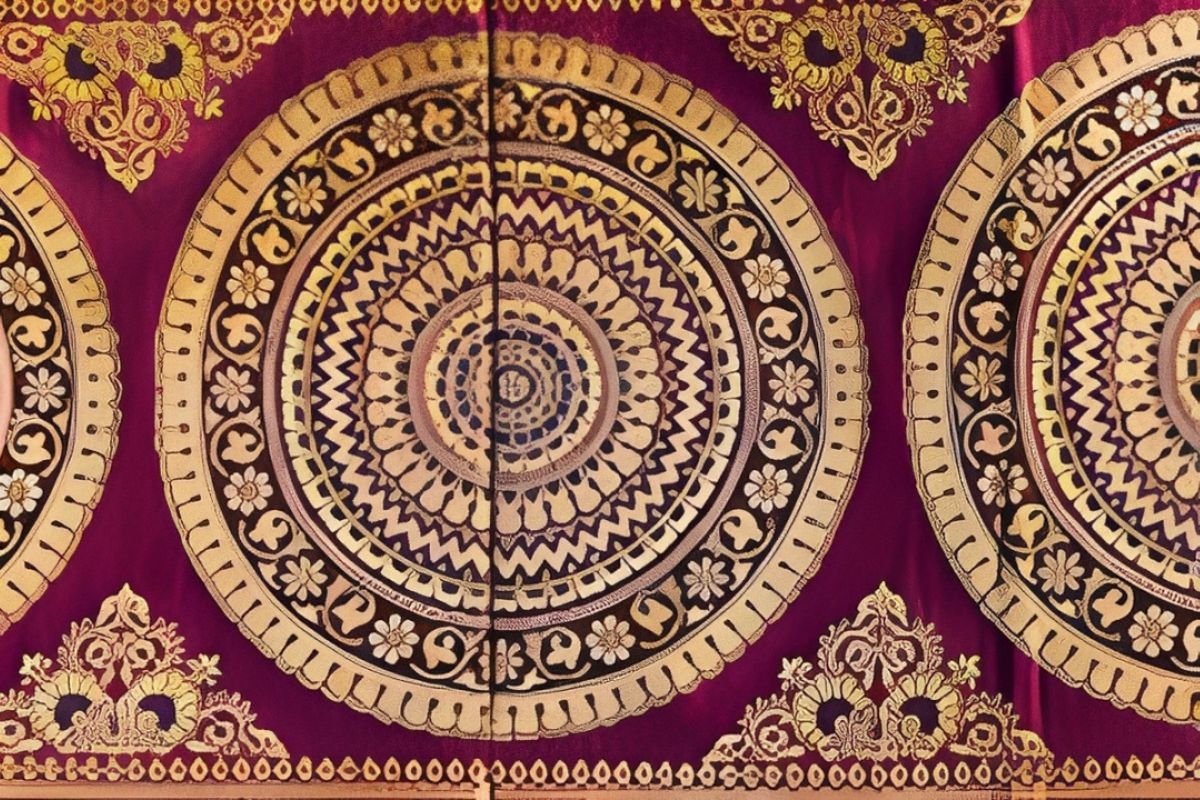
Himroo carries its alternative name as Kum Khuab. Tourists and locals both prefer these shawls because of their luxury touch and their complex designs. Special artisans apply their expertise to weave threads together in order to craft elegant patterns within the weaving process. Special events require these shawls because they depict elegance and sophistication. Specific materials of excellence used in the production make these shawls resistant to damage and ensure they will last through numerous wears.
Art Forms of Maharashtra: Bidriware
Bidriware consists of a handicraft composition made from zinc and copper blended with silver decorations. The people of Aurangabad have made important artistic and creative gifts to Maharashtra’s cultural heritage. The primary purpose of Bidriware arts focused on creating Paan Daans (betel leaves containers) and hookahs. Artisans use precise working techniques to decorate metal pieces by adding either brocaded or overlaid pure silver or by embedding this silver into the surface. The original purpose of Bidriware objects as hookahs or paan daans has evolved into tourist-selling items.
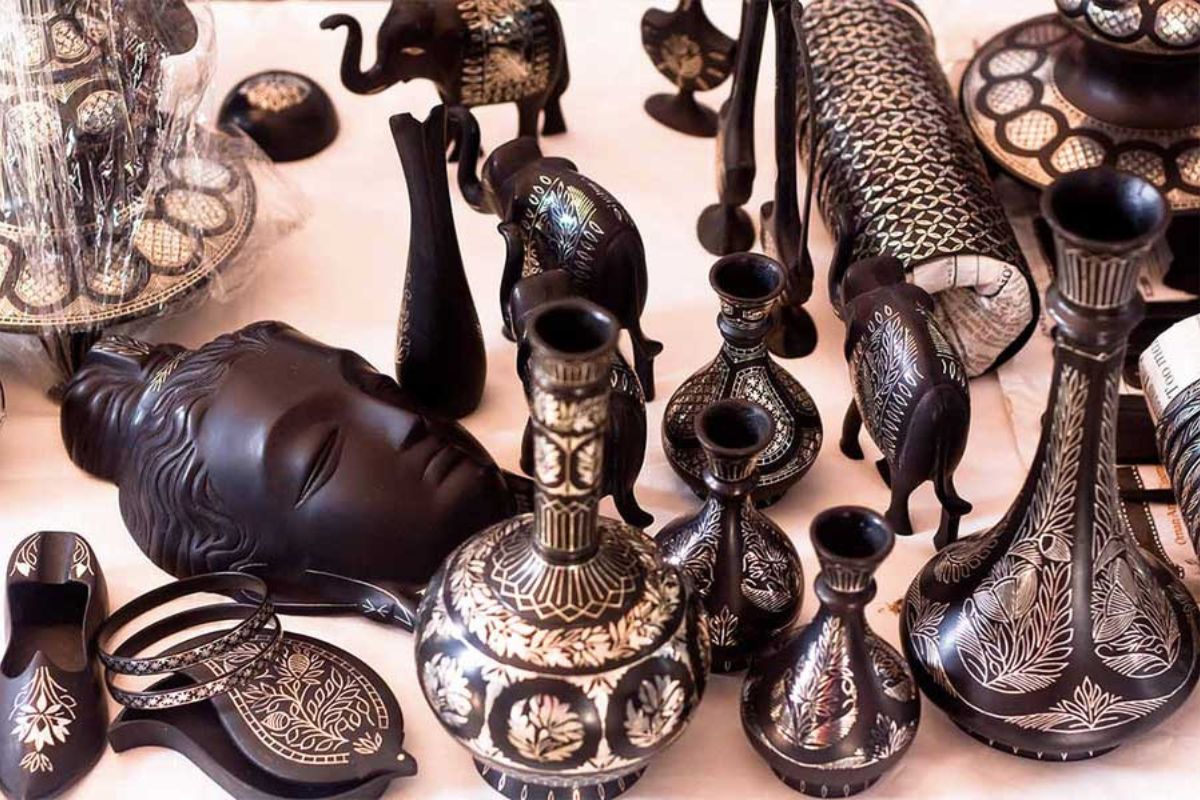
The entire array of Bidriware accessories consists of plates, bowls, vases, ashtrays, trinket boxes and jewelry. Caster operators use zinc and copper alloy to form their design and complete it with specific silver inlay techniques. Before the finishing process the item undergoes treatment with a special soil-derived solution that transforms the zinc alloy from silver to dark tones. Migration of culture has elevated the distinctive beauty of Bidriware because it presents itself as an excellent choice for decorative items and presents.
Art Forms of Maharashtra: Kolhapur Jewellery
Kolhapur jewellery established its reputation during the era of Peshwas and Marathas in history. The ornate design and beautiful nature of Maharashtrian jewelry have established its worldwide recognition. Kolhapuri necklace serves as Kolhapuri Saaj which represents a well-known jewellery design which Maharashtrian women tend to favor. The traditional jewelry pieces of Kolhapur comprise a set of items that includes the Nath nose ring combined with Kolhapuri Saaj necklace along with Thushi choker and Bugadi earring and Mundavalya forehead ornament.
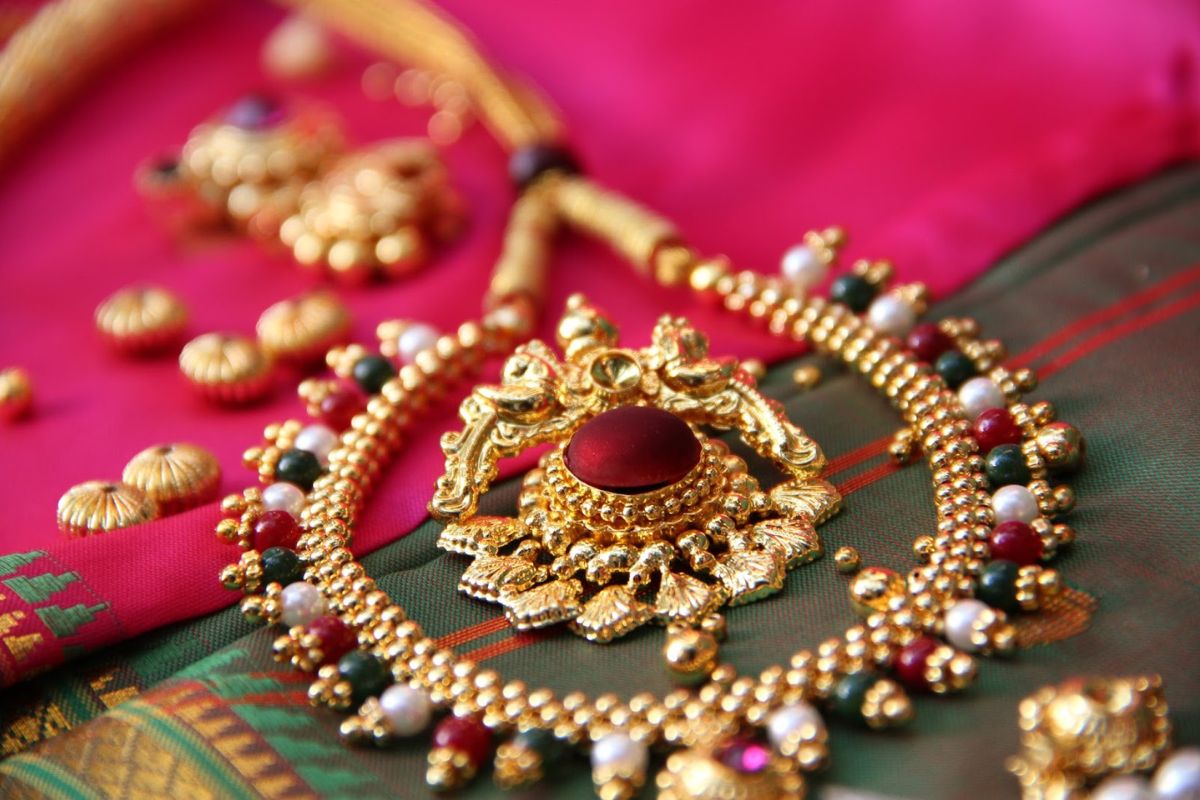
The metal and gemstone jewelry displays the profound cultural history that exists in Maharashtra state. Kolhapuri Saaj holds great importance because women usually wear it during ceremonial events including weddings. Each design of Kolhapuri jewellery comes from nature and mythology and features detailed work alongside bold hues. Artisans from Kolhapur follow traditional methods to handcraft jewelry which acquires great worth as generations continue to treasure these amazing creations. Kolhapur jewellery wins widespread appreciation throughout India because of its distinct combination of beauty and elegance which people admire equally.
Art Forms of Maharashtra: Sawant wadi Craft
Sawantwadi stands out as the main lacquer art hub in the Maharashtra district of Sindhudurg. Lacquer craft has been used in Sawantwadi since the 17th century. Woodworkers prepare items by applying natural resin lacquer before artisans decorate the surfaces with detailed decorations on wooden surfaces. A group of experienced artisans works to apply multiple lacquer layers while carefully creating decorative patterns in the process. Sawantwadi lacquerware stands out through its combination of brilliant colors with intricate detail work on its products. Objects made of wood along with toys, furniture and decorative pieces are typical lacquerware items.
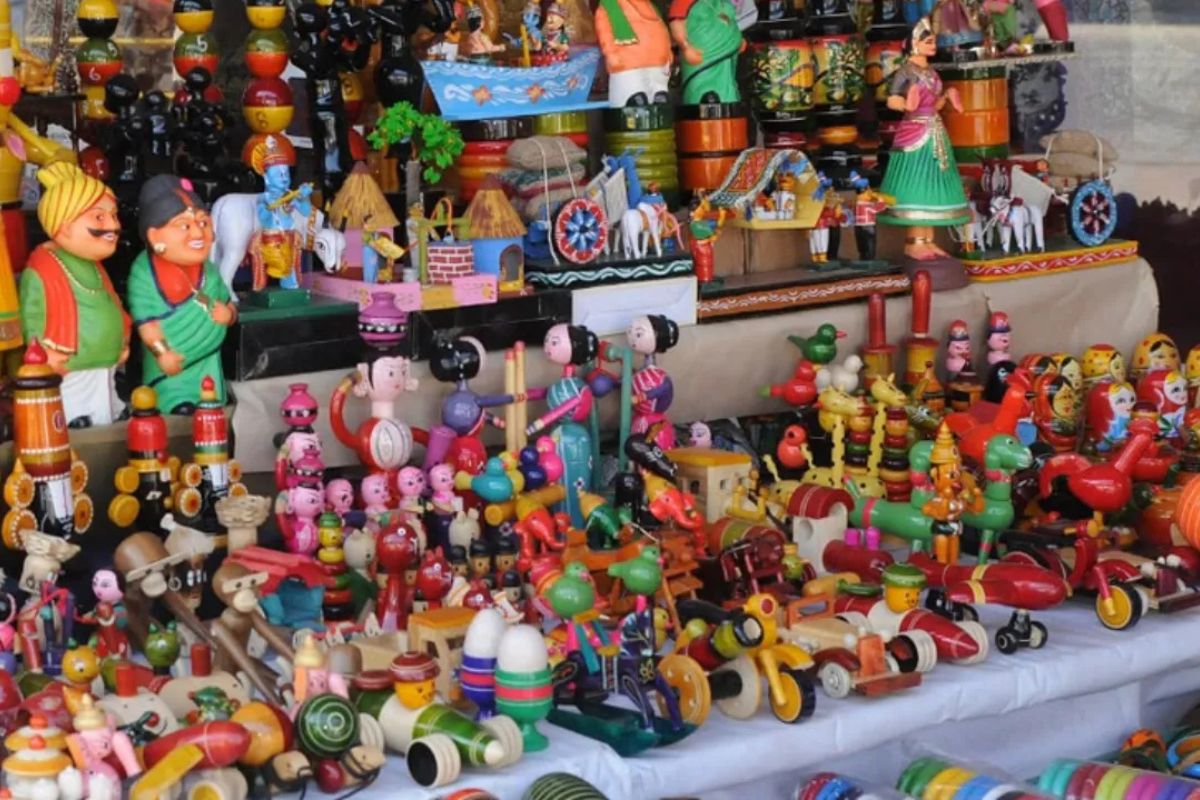
Multiple generations have protected the art because traditional lacquerware knowledge gets transmitted from one family member to the next. Local artisans receive their livelihood through the lacquerware industry which simultaneously promotes the economic as well as cultural traditions of the area. Sawant wadi lacquerware stands out through its special designs and lasting properties which fuels its attractiveness to domestic and international consumers. A distinctive characteristic of the products is that each piece showcases artistry that represents the cultural heritage of Maharashtra because the creators use traditional work methods alongside natural materials.
Art Forms of Maharashtra: Narayan Peth Sarees
Sarees from Narayan Peth gain their reputation in the town of Solapur. Saree lovers tend to choose this particular style. Female community members from Solapur primarily produce these sarees. Narayan Peth sarees are distinctive because of their particular designs combined with premium fabric materials. The designers accentuate Narayan Peth sarees by weaving silk and cotton threads into elaborate patterns while adding eye-catching border contrasts. The skilled practitioners who do this work must rely on traditional handloom methods for weaving. Narayan Peth sarees stand out because they offer long-lasting material and easy comfort which becomes preferred attire for regular times as well as social gatherings.
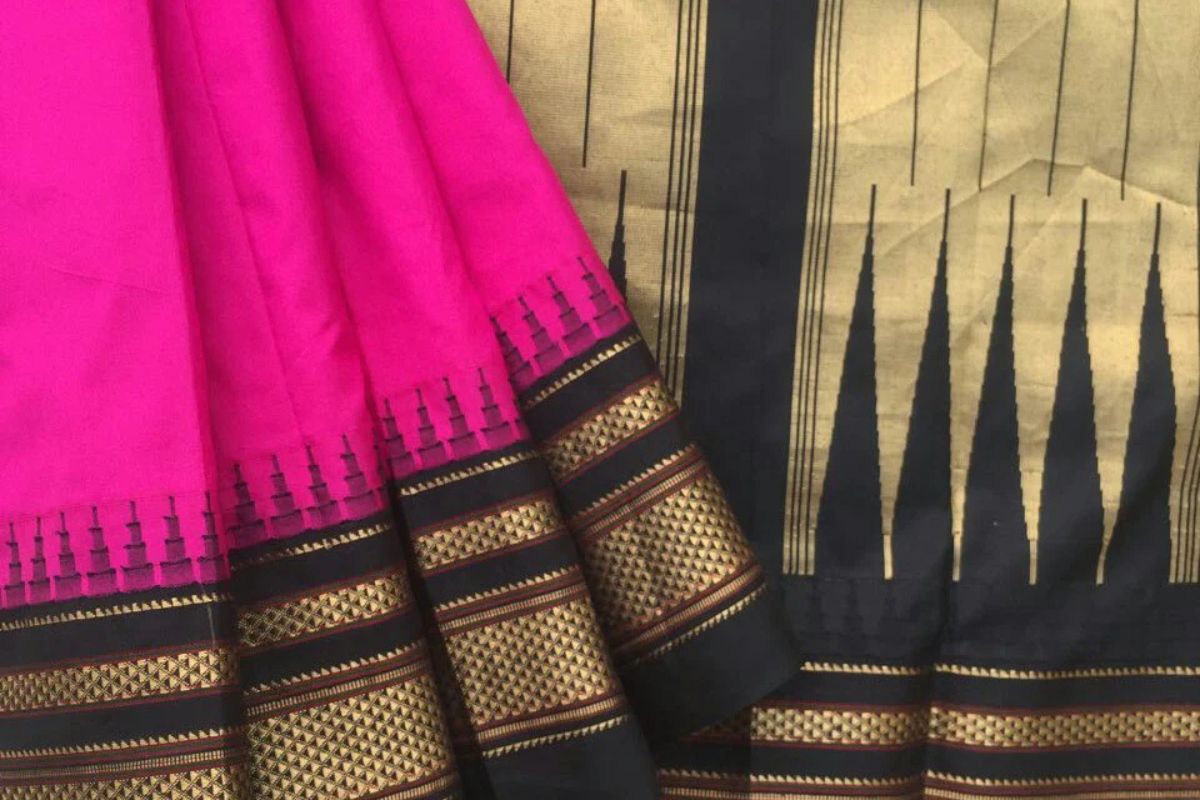
The traditional attire from Solapur represents the cultural values of the city while people commonly wear these sarees during major social events such as weddings and festivals. The craftsmen in this local community aim to safeguard traditional weaving methods to create unique masterpiece sarees for every piece. Narayan Peth sarees have gained widespread popularity throughout India since people from all regions admire their timeless elegance and cultural significance1. This priceless fabric along with its beautiful color scheme and detailed designs showcases the traditional history of the region therefore making the sarees worth any wardrobe investment.
Art Forms of Maharashtra: Paithani Sarees
The traditional Paithani sarees developed their origins in the historic town of Paithan. A traditional woman traditionally wears these silk sarees. Attractive prices restrict these Silk creations because special weavers use superior silk materials for hand-creation. Paithani sarees display their signature features through their luxurious colors while featuring complex designs and adding gold and silver zari3 elements. Maharashtrian culture symbolizes these sarees as traditional attire which Paithani-wearing women don for their weddings along with other special festivities. Many skilled weavers maintain the ancient weaving tradition since they learned their specialized weaving skills from their ancestors.
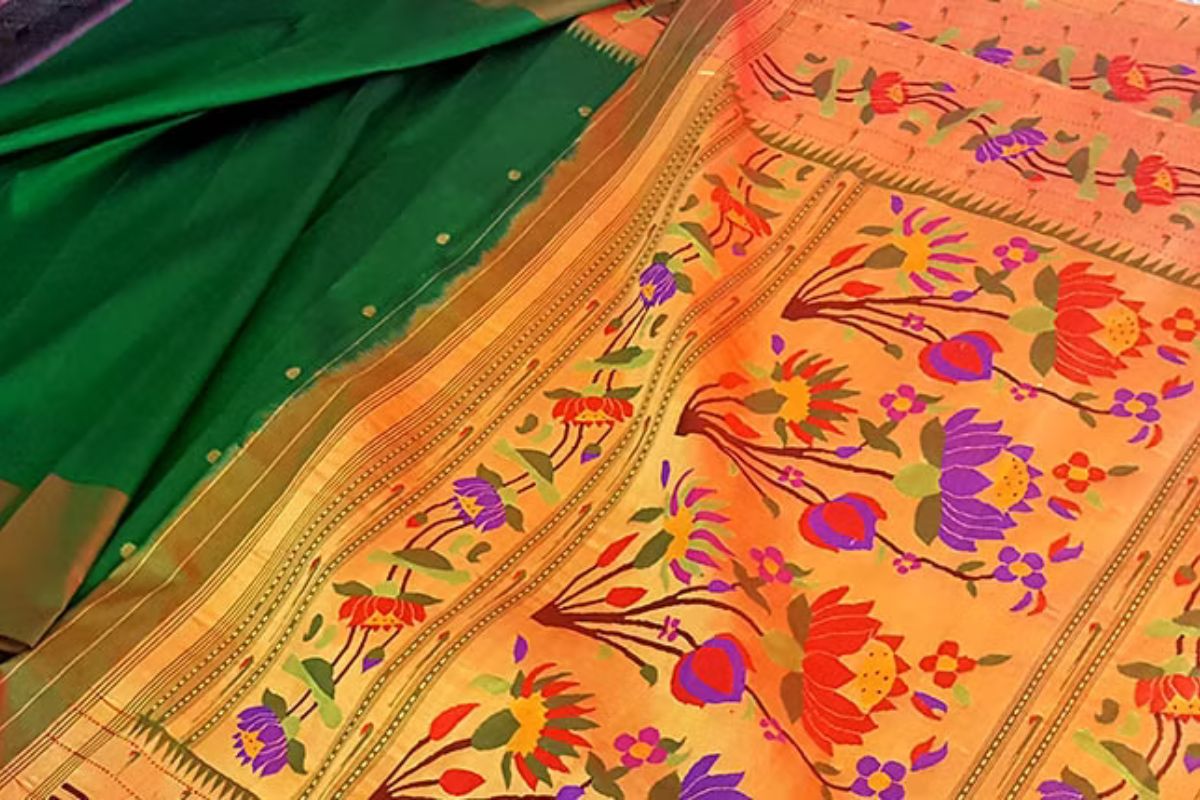
The weaving designers incorporate natural motifs which can include peacocks together with lotuses and parrots within their patterns. People consider Paithani sarees as valuable family treasures which families transmit from generation to generation. Paithani sarees obtain china silk threads combined with Surat zari threads. The production of one Paithani saree requires 250 grams worth of silk threads as well as 125 grams zari threads. Present-day weavers reside in Paithan alongside Yeola and Pune and Nasik and also have settlements in Malegaon. The stunning handmade excellence and everlasting elegance of Paithani sarees positions them as highly desirable among both royals and present-day fashion designers.
Art Forms of Maharashtra: Warli Painting
The artistic expression of Warli painting belongs to a tribal artistic tradition. Warli tribe members based in the northern borders of Mumbai produce these artistic works according to tradition. Warli painting represents theme-focused artwork which women execute on mud structures along with fabric and handbags. Elements of square geometry together with triangle and circle shapes define Warli painting stylistic characteristics.
Different natural elements are depicted through these geometrical shapes in the Warli paintings. The sun and moon appear as circular shapes and mountains along with conical trees are shown through triangular shapes. Artistic scenes in Warli paintings present the imagery of hunting activities along with fishing practices and farming scenes and festivals with dancing performances. Two white triangular shapes joined at their points show both humans and animals in the artistic representation.
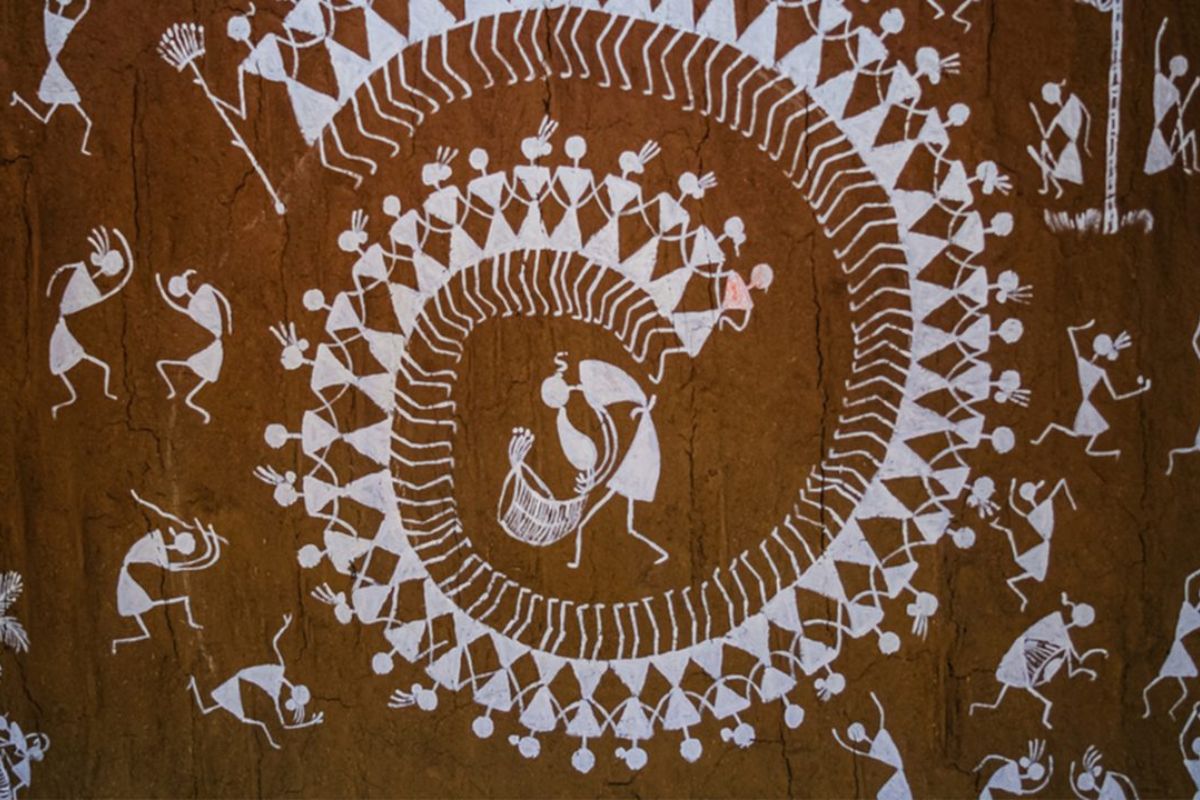
Warli art revolves entirely around Mother Nature because all components focus on natural elements. Modern artists recreate Warli paintings by applying rice paste-based earth brown and white colors on walls. The painting technique has evolved by introducing extra color ingredients such as henna, indigo, ochre, black, earthy mud and brick red to the original earth brown and white base colors made from rice paste. The tribal community of Maharashtra maintains Warli painting as a vital cultural element which demonstrates both their lifestyle and religious worldview and traditions. Warli art has received national and international recognition leading to related preservation and promotion initiatives.
Art Forms of Maharashtra: Banjara Embroidery: A Vibrant Textile Art
The Banjara community in India uses Banjara embroidery as their traditional embroidery textile practice which the Lambani community also calls Gormati embroidery. Banjara people maintain a nomadic lifestyle as a group which expresses itself through embroidery craftsmanship. You can recognize Banjara embroidery through its multicolored threadwork and elaborated details of mirror application and delicate stitchwork. Cotton fabric serves as the main material for Banjara embroidery while the motifs show geometric forms along with flowers and events in daily life.
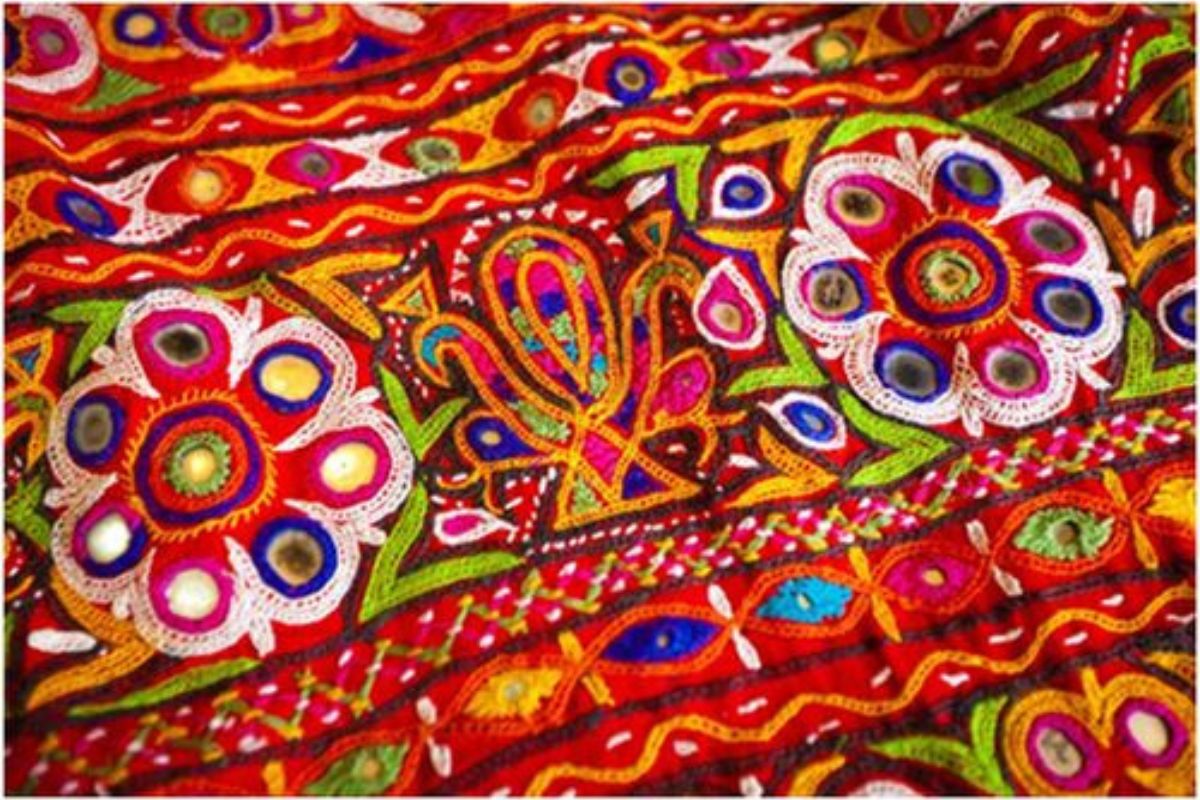
Clothing elements alongside bags together with wall decorations stand alongside decorative items as the main products fabricated with Banjara embroidery techniques. The Banjaras maintain Banjara embroidery techniques which are transferred from one female generation to the next. The distinctive feature of Banjara embroidery relies on its application of a bright color palette consisting of red, yellow, green, blue and orange. The technique of mirror work stands as an essential part of Banjara embroidery because it generates a shining appearance in the fabric.
Art Forms of Maharashtra: Sisal Craft: Sustainable Fiber Art
Sisal craft represents an artistic process which converts sisal plant (Agave sisalana) fibers into diverse products. The sisal plant originated in Mexico and countries across the world cultivate it including India. The durable sustainable sisal fiber stands as an excellent material because of its strength and longevity. Sisal craft serves as both art and promotes sustainability because it uses a fiber source that decreases waste. The extraction of sisal fibers from sisal plant leaves occurs through a method named decortication. After washing the fibers they undergo drying before the spinning process creates sisal yarn. Various products manufactured from sisal yarn include baskets and mats along with rugs and bags and decorative objects.
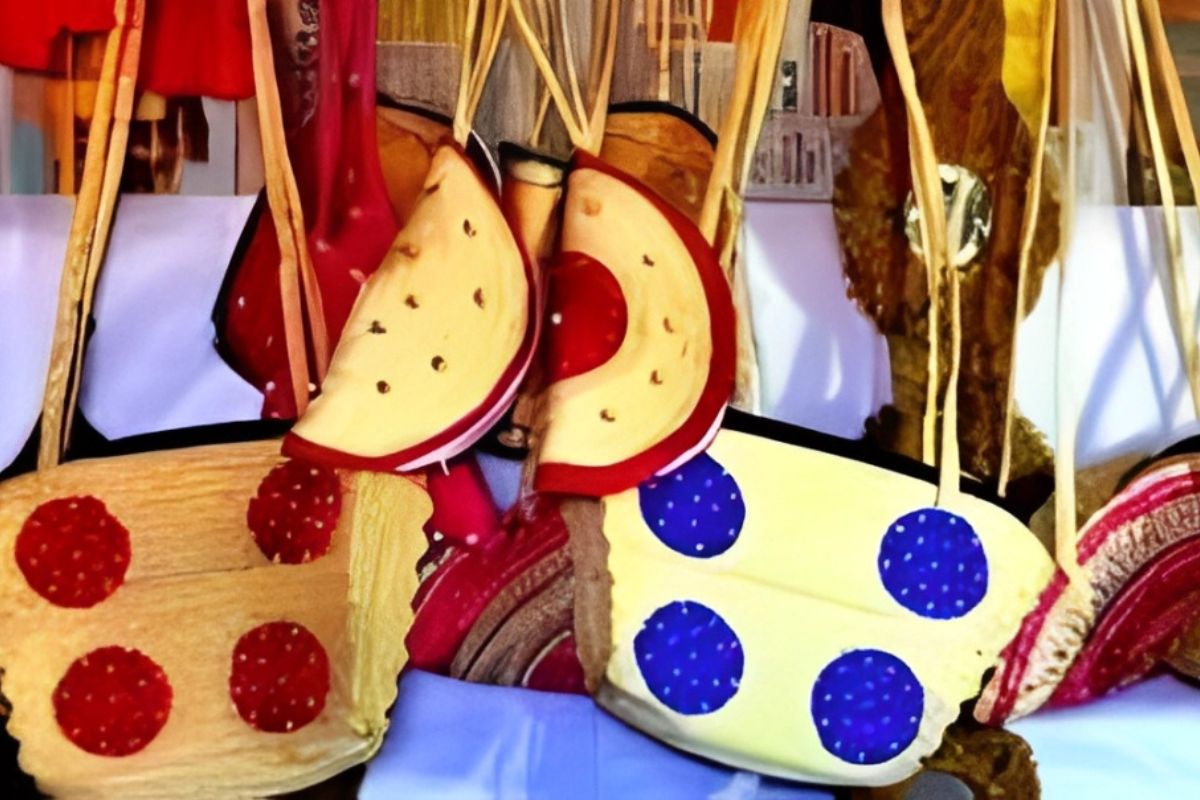
Techniques and Products
Craftwork with sisal material uses multiple methods throughout which artisans perform weaving along with braiding and coiling. Through their creative skills the artisans convert sisal fibers into pleasing and useful goods. The market offers a wide selection of decorative and storage-purpose sisal baskets. Produced items show a wide diversity in shape together with design selection and dimension variations. Sisal mats along with rugs survive through many seasons because of their durability.
Any room obtains a rustic yet natural appearance due to their use. Sisal items work well for purchasing needs along with journey needs as well as regular daily tasks. Through its sustainable nature Sisal craft supports domestic communities while helping maintain the environment. The fabrication of useful products and environmental protection occurs through artisans utilizing sisal fibers to produce attractive items.
Art Forms of Maharashtra: Kolhapuri Chappals (Footwear)
Leather footwear made by hand is what makes Kolhapur famous throughout the world as Kolhapuri Chappals. The chappals possess basic designs and trendy style together with premium-quality leather. The decorative Kolhapuri Chappals are handmade braided leather slippers with vegetable dye tanning processes. Kolhapuri Chappals produced their first pair during the 12th century through support from King Bijjala and his prime minister Basavanna during their rule. Existent names of these chappals served as identifiers because of the villages where production took place. During his reign Shahu I of Kolhapur supported the development of Kolhapuri Chappal production by creating 29 tanning facilities.
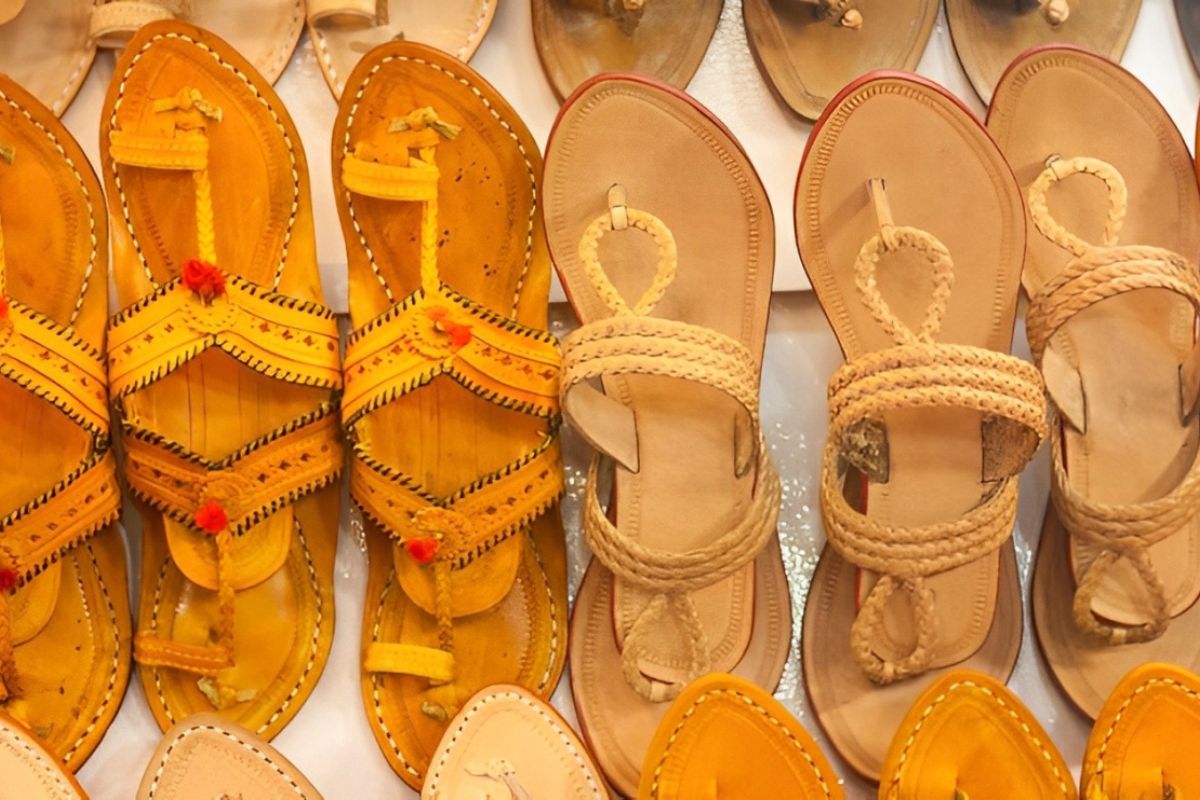
The government granted Kolhapuri chappals a geographical indication tag during July 2019. The production process for buffalo-hide and thread Kolhapuri Chappals consumes a six-week durations before completion. Kolhapuri Chappal manufacture follows a production sequence which starts with skiving followed by pattern creation and continues with cutting before stitching before moving to finishing then decoration. When properly maintained Kolhapuri chappals have the ability to endure for an entire human lifetime. The designs started as ethnic patterns yet turned practical while the materials progressed towards softer materials that offer better comfort. The Kolhapuri Chappal industry maintains its position as an essential cultural and economic force in Maharashtra despite dealing with market reduction and environmental restrictions.
Conclusion
The local artisans demonstrate their skilled craftsmanship through the artistic expressions of Maharashtra which stem from its traditional history. Throughout Aurangabad stands the luxurious Himroo and Mashru shawls as well as the intricate silver inlay of Bidriware which collectively share stories of traditional arts. The regal Kolhapuri jewellery pieces and the colorful textile collections from Narayan Peth and Paithani serve to showcase the substantial heritage of textiles in the region.
Artists in Maharashtra maintain traditional manufacturing methods through preserving techniques in three activities including Sawantwadi lacquerware and Warli paintings and Kolhapuri chappals. India’s cultural identity intersects with the art forms which create employment opportunities for artisans at the same time. Sustained traditional crafts appreciation along with preservation initiatives allow Maharashtra’s artistic heritage to prosper through heritage modern aesthetic combinations that preserve traditional artforms.
Also Read: The Diverse and Unique Art Forms of Bengal
You can connect with DNN24 on Facebook, Twitter, and Instagram and subscribe to our YouTube channel.

